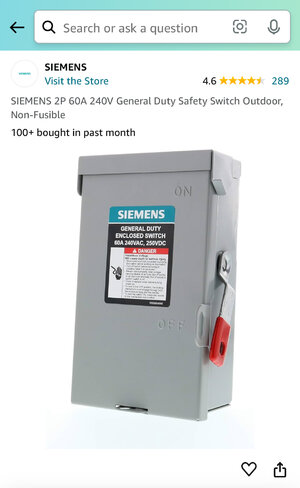Let's add another twist. Yes, campgrounds have a 50 amp double pole breaker. 50 times 240 = 12,000 watts of power. Like Kevin says and I believe the NEC says, circuits should be sized to run at 80% of rating. My 19 Dutch Star has an 8k Onan generator. It has a 35 amp double pole breaker. But it is pure 120v. If you measure across the lines it measures zero. Each line to neutral measures 120v. The legs can be tied together to make 70 amps of 120v but not split to make 35 amps of 240. I am still not completely certain how this all fits together and works(flawlessly I might add). I know the genny has the two lines and two neutrals going to the transfer switch that bond together there. I have not determined if the main line going to the panel has a oversized neutral to help compensate for the 240 volt pedestal power being out of balance. I know with both ACs going and the inverter/charger going full tilt, the system is definitely out of balance. About thirty amps on the leg with one AC and the inverter, about fourteen on the other. Maybe that amount of imbalance is with in the limits of the neutral? Maybe the panel is balanced well enough that you can't hardly overload the neutral?












